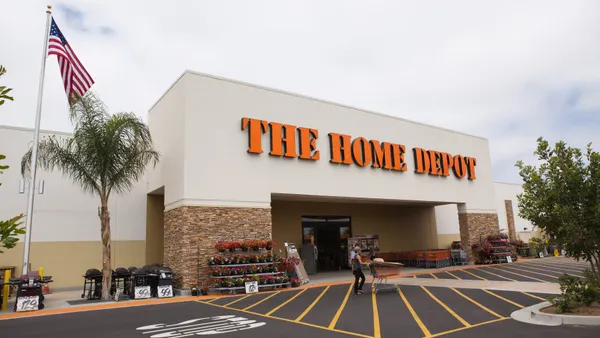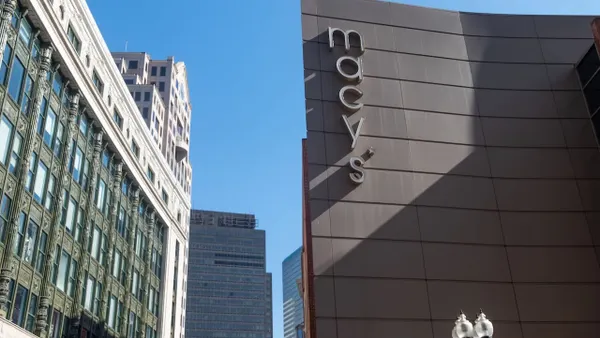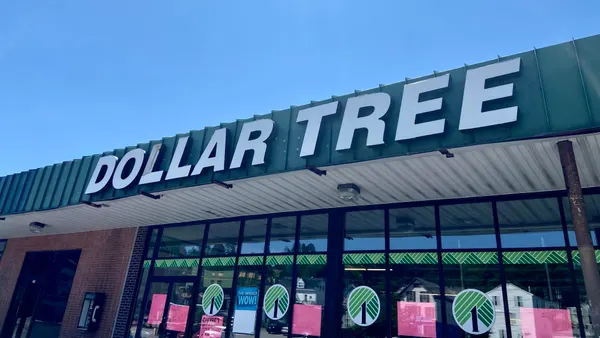Dive Brief:
- Sears Holding on Thursday reported that its total second quarter revenue fell 25.7% year over year to $3.2 billion, with merchandise sales falling about 29% to $2.4 billion and services revenue down nearly 13%, to $754 million.
- The company's closure of hundreds of stores in the past 12 months accounted for much of the sales decline. In a pre-recorded call, Sears CFO Rob Riecker said the company is "hopeful we can stabilize our store base at a meaningful level in the near future." Sears' comparable-store sales fell 3.9% in Q2. The comps drop also contributed to the top-line sales fall but represented the lowest drop in that metric since Q3 2014, according to data from Retail Metrics.
- As Sears made important headway in plugging sales leaks, its losses in the quarter more than doubled, from $250 million in the year-ago period to a $508 million loss in Q2 2018. Across banners, Sears' business went from positive operating income in the year-ago period to operating at a loss, with the company's total operating loss coming to $202 million in Q2.
Dive Insight:
The good news: Sears for the first time in years posted a comps decline only in the low single digits. The bad news: It did so partly at the expense of its margins, as Sears boosted promotions through its Shop Your Way loyalty platform and discounted merchandise at stores to clear lower-performing inventory.
Q2 represents an inversion of some recent periods for Sears. In all four quarters (Q1, Q2, Q3 and Q4) last year, the company made significant progress on its bottom line through massive cost-cutting efforts, but at the same time posted vertigo-inducing drops in comps.
The story flipped in the period that closed Aug. 4. By banner, Kmart's comps in this Q2 fell 3.7% and Sears department store comps fell 4%, with drops in appliances, mattresses and electronics hurting the brand's sales. Both banners had positive comps in apparel, footwear and other categories, including toys at Kmart.
Interestingly, the improved sales performance appears to have come as foot traffic to the retailer fell. According to location marketing firm inMarket, foot traffic fell by more than 6% year over year in May, June and July, and by nearly 6% in August. In fact, foot traffic has declined year over year every month so far in 2018, according to inMarket data emailed to Retail Dive. (The firm measures traffic through location data from mobile devices.)
In a blog post, Sears CEO Eddie Lampert once again touted the company's Shop Your Way program, saying that the company was "working hard" on a transformation based in part around "a paradigm shift from traditional retailing to a member-centric company." But that "journey," Lampert acknowledged, "has taken far longer than we expected."
Sears has so far kept solvent by shoveling costs out of its business — through store closures, layoffs and business exits — as well as through a kitchen-sink approach to raising liquidity via asset sales, loans from Lampert's hedge fund and deal-making with financial partners. (Among other asset sales already executed, the company is considering the sale of the Kenmore brand to Lampert's hedge fund, a deal that could go before "disinterested" shareholders for a vote, Riecker said.)
To boost sales, Sears has integrated a host of promotions and partnerships into Shop Your Way and teamed up with Amazon to sell tires, appliances and services. But, to state the obvious, to survive in the long run Sears at some point is going to have to stabilize both its top and bottom lines — at the same time.














